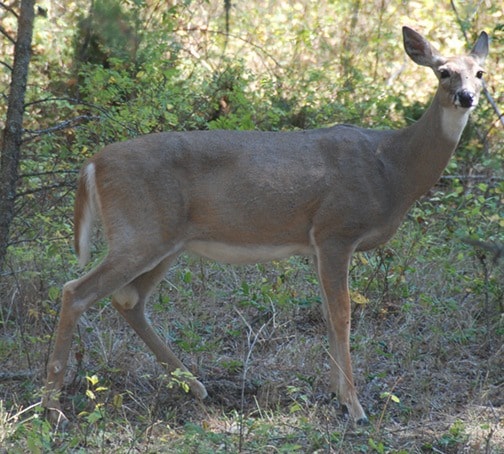As the season turns into fall, hunters are hauling out their gear to head out into the backcountry to search for their elusive ungulates.
Hunting season, starting with an early archery phase, opened on Sept. 1st for elk, mule and whitetail deer, and moose.
For the most part, ungulate populations in the area seem to be doing alright, according to a wildlife biologist with the Fish and Wildlife branch of the Ministry of Forests, Lands and Natural Resource Operations.
However, the government is keeping an eye on the mule deer population, as hunting regulations recently replaced an any mule deer buck season with a four-point mule deer buck season.
"That was mainly because of concerns about low buck-to-doe ratios in some areas," said Tara Szkorupa, a wildlife biologist.
…And then we just have concerns about the mule deer population overall. We don't believe that there was any correlation between the any buck season and the declines in the mule deer because there was still good fawn recruitment and breeding and there didn't appear to be any effect on breeding."
A combination of animal health and predation are potential factors to the population decline, she added.
"Those can interact and there can be less complicating factors around that, but those are the main two factors that we're looking at," Szkorupa said.
"So the health and the body condition of the animals—that would point to habitat potentially being limiting and then we have radio collars that a signal goes off when the animal dies and we can get in on the animal quickly and look at which predators—if it was predated on—which predator was involved."
Wildlife biologists aren't as concerned about Whitetail deer, but are still watching the populations very closely, she added.
Hunters have reported fewer whitetail sightings to the Fish and Wildlife branch in areas with good road access and heavy hunting pressure. However, based off the harvest records from 2014, hunters seem to be having a lot of success with Whitetails, she said.
"Whitetail, overall, appear to be doing quite well, but we're watching the populations very closely and we're discussing options for changing hunting regulations for the future as well."
For both Whitetail and Mule Deer, the provincial government is also looking for hunters to bring in the heads of their animals to select butcher shops or the Ministry of Environment office to test for Chronic Wasting Disease.
According to a provincial online resource, Chronic Wasting Disease (CWD) is a fatal disease of animals in the Cervid family, which include mule deer, white-tailed deer, elk and moose.
CWD is not currently present in B.C. but is spreading west in free-ranging deer from Alberta. There has been a CWD surveillance program since 2002 that has tested over 2,500 deer, elk and moose.
Chronic wasting disease (CWD) was first detected in captive mule deer in the 1960s in Colorado and Wyoming and was introduced to Canada from the United States by imported captive elk.
There is currently no evidence that CWD can infect humans. For more information on CWD, visit www.gov.bc.ca/wildlifehealth.
In terms of changes to the Region 4 B.C. hunting regulations, there isn't too much different from last year.
In select management units, there are expanded spike-fork moose hunting
opportunities, revised cougar seasons and female quota as well as modifications to agricultural zone elk hunting opportunities.
The cougar changes were made mainly in areas that are home to Caribou in the region.
"The bag limit was increased in mainly caribou areas—areas where we are concerned about predation on caribou and there's not a whole lot of cougar hunting in those areas and so that was just another potential tool to increase the harvest in those areas a bit," Szkorupa said.
For a complete synopsis of the hunting regulations, go online and visit: www.env.gov.bc.ca/fw/wildlife/hunting/regulations/.
